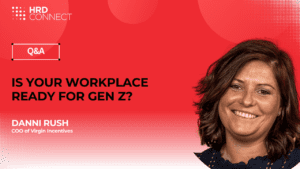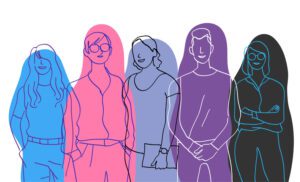How to launch or re-energize your employee experience approach
- 8 Min Read
Even in challenging circumstances, HR leaders need to build engaging and fulfilling workplaces for employees. Belinda Gannaway of Fathom XP delves into why the employee experience has taken on a new urgency and key steps in creating successful strategies.
- Author: Belinda Gannaway
- Date published: Dec 11, 2020
- Categories

The psychological contract at work is changing, and with it, expectations of what work entails and the and broader employee experience. As a result of people’s ongoing quest for meaning, purpose, and a more rounded employee experience (EX), it’s frequently suggested that employees have become consumers of the workplace.
Pandemic or not, we believe this is the case and will continue to be so. In our last piece for HRD Connect, we looked at why, despite COVID throwing many HR and business plans into disarray, EX continues to be a priority for organizations small and large. Moving beyond the business case for EX, here we explore how to better understand and then deliver the experience your people want and need to thrive – an experience that starts before someone joins and lasts as memory sometimes long after they leave.
Why intention matters today
Everyone who works for you has an experience of you, in some form. The question is, is it the right experience? Whether a small, every-day interaction or something more significant, only by being intentional about the many experiences people have of you can you hope to architect the larger, overall employee experience.
We believe this all comes down to EX design – the application of design principles, first to how you understand people, their needs and expectations, and then to how you develop, test and iterate solutions to make the experience the best it can be.
We go into detail about our approach to EX design in our practical book: Employee Experience by Design – How to Create an Effective EX for Competitive Advantage. Rooted in design thinking and drawing from positive psychology (the study of what makes life worth living), we suggest a practical framework any organization can use to understand and then create a better EX for people.
Below we pull out a few key principles we believe should characterize any approach – whether you’re just starting on your EX journey, or want to energize an established EX approach.
What we mean by ’employee experience’
EX definitions come in various guises. There are multiple approaches, emerging concepts and ideas, as well some pioneering organizations leading the way. Some definitions may feel instinctively right for your organization, some distinctly off. So listen to what your gut is saying, because creating a compelling EX is not as simple as following someone else’s blueprint.
You first need to be clear that when you are talking about EX, there is a shared understanding of what this means and why it matters. Being clear on your organization’s definition of EX, across levels and teams, is the only way to ensure the alignment, focus and commitment necessary to make a meaningful impact.
Not only do we believe this is vital, but engaging in dialogue about your organization’s definition is an accessible and inclusive place to start your journey with EX. EX is not the remit of an HR team – it goes way beyond that. Having an open dialogue from the outset will lay the best foundations.
Embrace your constraints
Those organizations that are reporting the biggest strides in EX share a common mindset – they think like designers. More than that, they report having design thinking at the core of their approach. A key plank of design thinking is acknowledging upfront – in fact, enthusiastically seeking out – the constraints within which you’ll be operating.
We advocate the same for EX design, because it’s not something that happens in a vacuum – in the real world you can’t simply find out what people need to have a great experience and then deliver on-demand. A great EX happens within the constraints of three sometimes aligned, sometimes competing and often shifting demands. These are: your organizational context (strategy, purpose, values etc), the requirements of the work (what it is and where it happens etc), and your people. We call these ‘the three lenses’, and we use them to help organizations start to frame the ideal EX they need to create and then prioritize activities accordingly.
Raise the bar
A common approach to employee experience focuses on ‘hygiene factors’ – those elements of work you need to get right to ensure employee satisfaction (for example, pay, benefits and work space). But while hygiene factors facilitate satisfaction, they don’t always generate the positive emotions associated with a great experience.
We’re not suggesting hygiene factors don’t matter – get these experiences wrong and you’ll soon know about it – but rather, that having a positive experience of these factors should be a given. These experiences, though critical, rarely differentiate or create a competitive advantage. The opportunity for EX to set your organization apart from competitors lies in discovering the motivation (as opposed to satisfaction) factors that matter to your people, and then designing experiences that facilitate them.
Be led by curiosity
Curiosity is fundamental to great design. It challenges assumptions and raises really important questions. Curiosity is powerful for another reason as well. It prompts us to find and work with the people who have the insight or skills we lack. The best designers know that it takes people from all disciplines and experience to understand a problem and find a solution.
Only a fraction of the employee experience is made up of HR products and services, and HR should only make up a part, not the sum of the design team. Creating a great EX means bringing together diverse perspectives and expertise from across the organization to reimagine experiences. And it means involving your people too – designing not just for them, but side-by-side with them.
It’s sometimes called radical participation, and not only does it result in better experiences, it also reduces resistance to change and increases ownership, engagement and commitment.
Get over yourself
Intentionally creating experiences is a very different activity to specifying, building and delivering systems, transactions and processes to manage people as ‘human’ resources. We define ‘employee experience design’ as the application of design principles, and positive psychology, first to how we understand people and their needs and expectations, and then to how we develop, test and iterate solutions to curate their experience. Design thinking begins with developing a deep understanding of the people you are designing for, in our case employees.
You can only get to the heart of your EX if you practice deep empathy to understand and design around your people’s emotions, attitudes, beliefs, perceptions and behavior. Empathy (combined with the three lenses) ensures you don’t fall into the trap of making assumptions about what your people want, or blindly following a model of EX that may not be relevant to your organizational context. It also ensures you work on the parts of the experience that make the biggest difference to your people (which may not be the most obvious or shiny).
Test and learn
An experimentation mindset helps prevent EX solutions that are over-engineered, take years to complete, and then fail to hit the target. Instead, having a commitment to experimentation encourages a bias for action, rapid learning and continual improvement. Great EX solutions are always in beta because they’re always being built on and improved. EX design is by its nature evolutionary, and an experimentation mindset helps drive it forward.
Given the rapidly changing context of many organizations right now, innovation has never been more critical. And the same goes for EX. If you need to rapidly understand and re-engineer elements of your EX, adopting an experimentation mindset will ensure you can try new things rather than falling back on old habits or ways of doing things that are no longer helpful.
Go your own way with employee experience
There is no one-size-fits-all approach to a great EX. No benchmark. An EX focus means operating at different levels – strategy (what’s your vision and are you delivering?), solution (what part of the experience do you need to improve and how?) and everyday experiences (all those micro experiences that create an impact). It is big and it can be daunting.
However, positive psychology coupled with a design mindset will allow you to identify the right things to work on, and design iterative solutions while continually learning. It all starts with starting. So start the conversation by defining what EX means for your organisation – and why.










